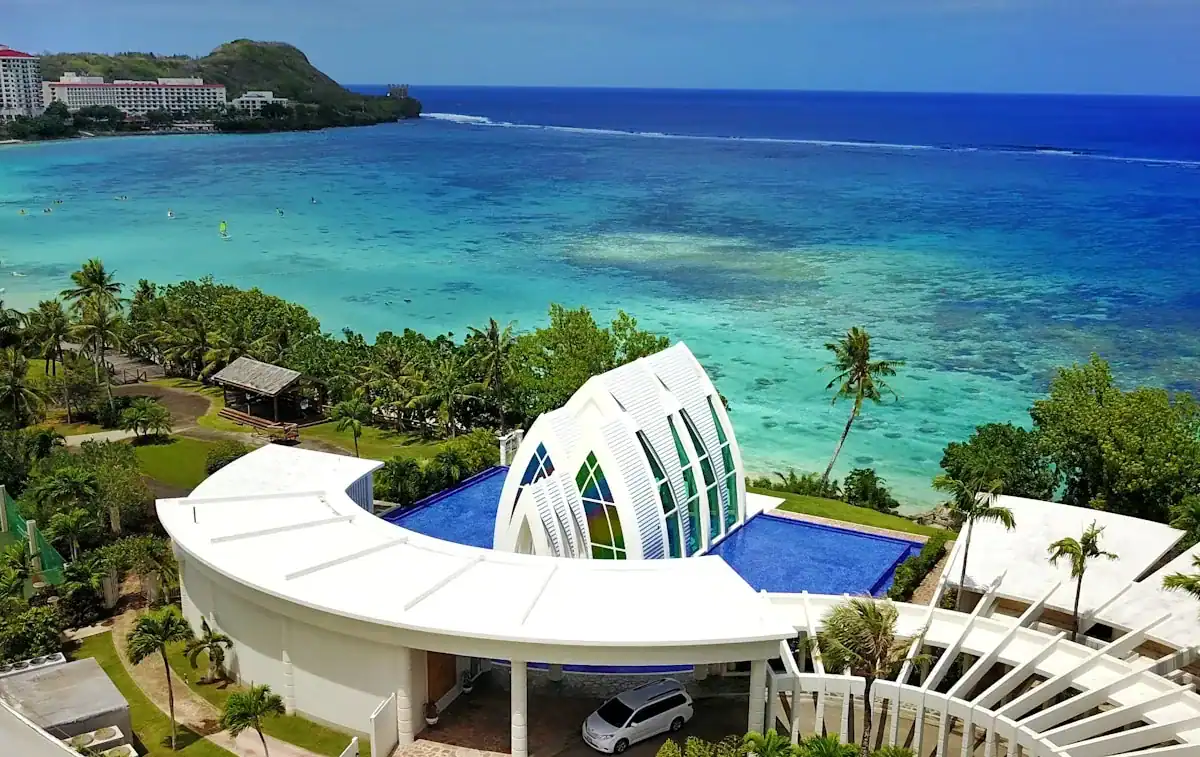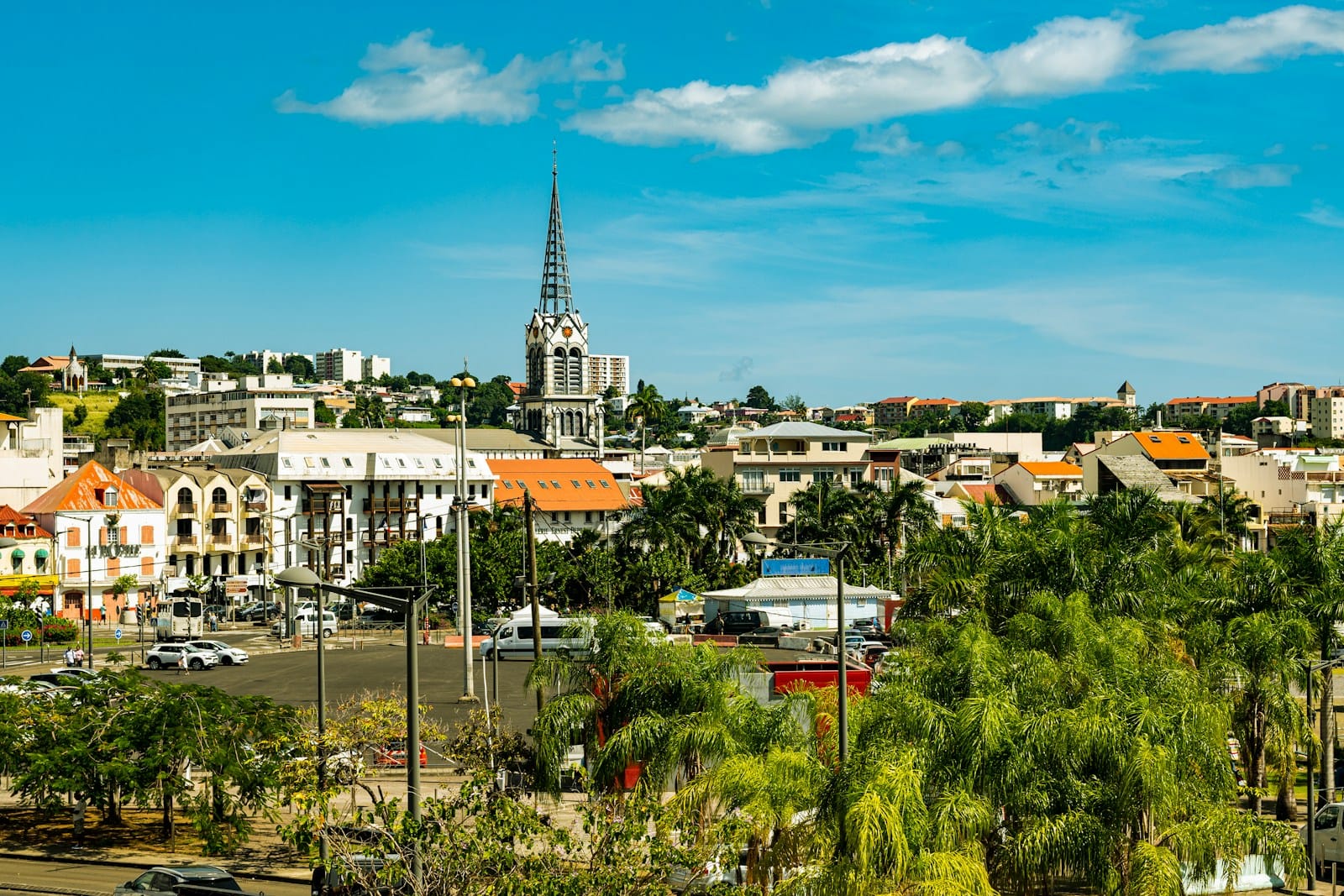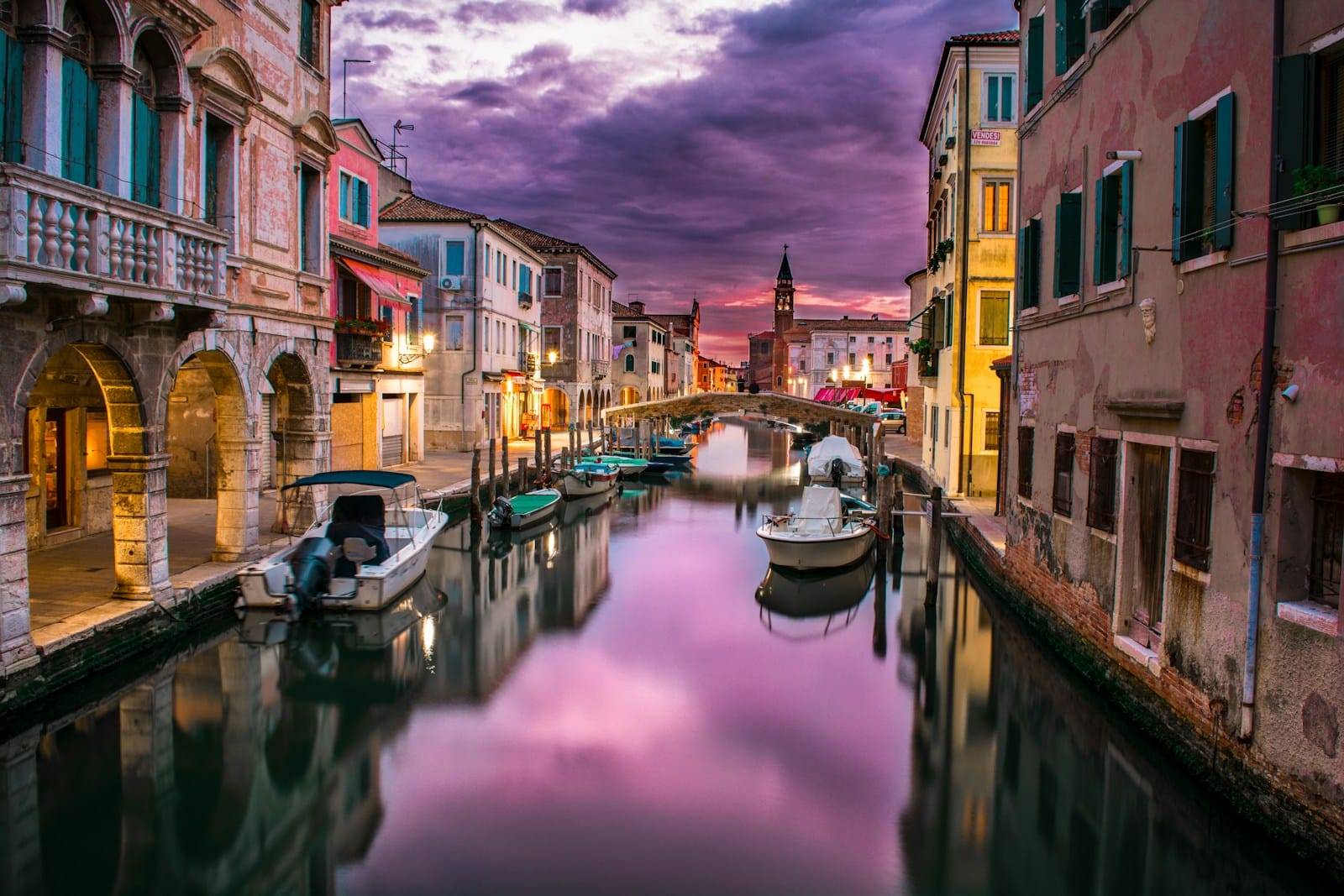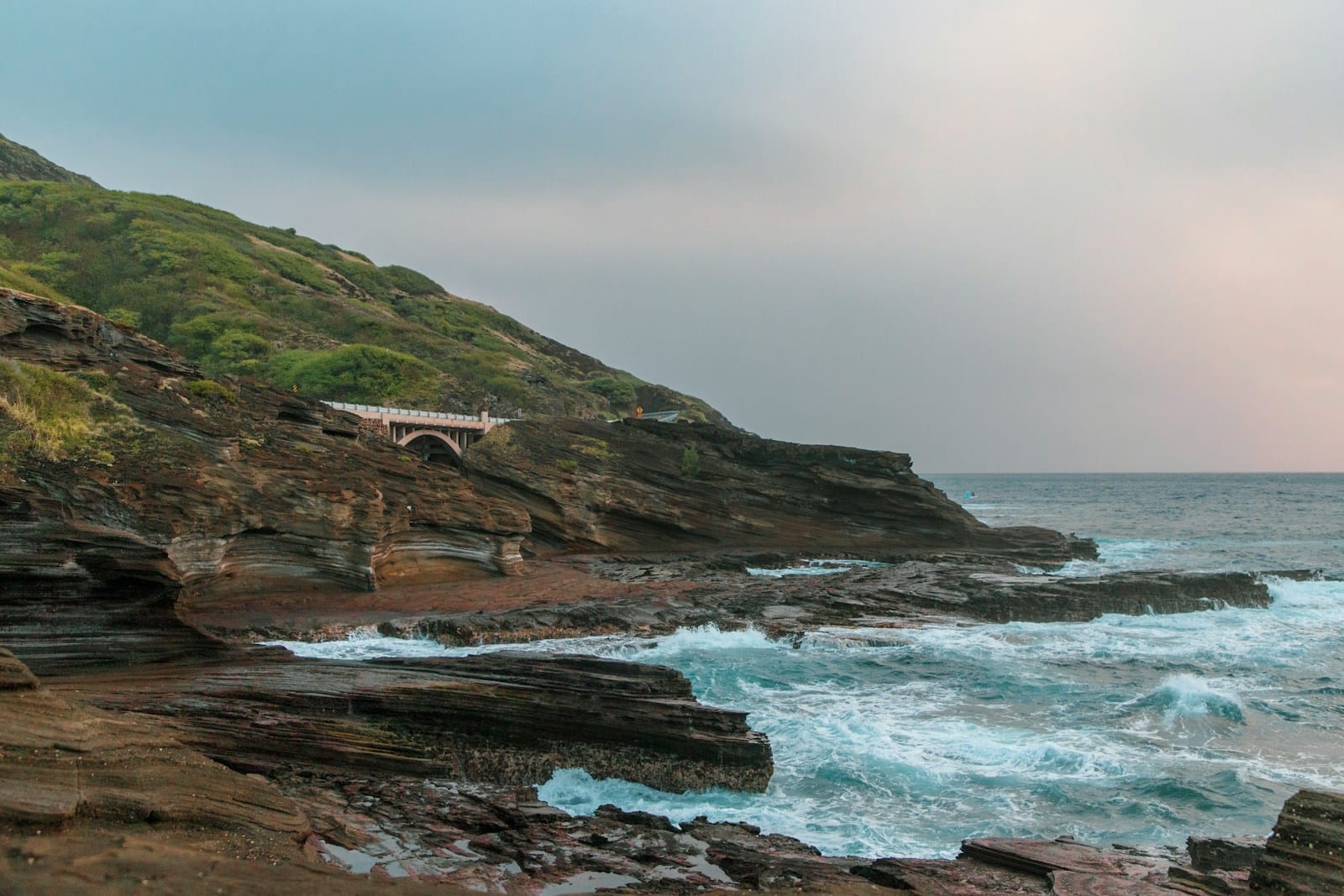Guam Travel Guide: Island Adventure and Culture
Intro to Guam Travel Guide
Set in the western Pacific, Guam is the southernmost and largest of the Mariana Islands, a U.S. territory that blends Chamorro traditions with American influences and tropical beauty. Known for turquoise lagoons, WWII history, and its unique Pacific crossroads identity, Guam offers travelers a mix of beaches, culture, and adventure. Whether you’re diving in coral reefs, hiking jungle trails, or shopping in bustling Tumon, Guam is both exotic and accessible.
Start your journey with our Guam Travel Guide and discover everything this island has to offer — from limestone cliffs and ancient latte stones to Chamorro feasts and sunset cruises.
Where to Go in Guam
Agana Heights | Asan-Maina | Barrigada | Chalan Pago-Ordot | Dededo | Hagåtña | Inarajan | Mangilao | Merizo | Mongmong-Toto-Maite | Piti | Santa Rita | Sinajana | Talofofo | Tamuning | Umatac | Yigo | Yona
💡Quick Facts:
Destination: Guam
Continent: Oceania (Micronesia region, western Pacific)
Country/Territory: Unincorporated Territory of the United States
Administrative Division: Single main island (Guam) with surrounding islets
Area: 544 km²
Population: ~171,000
Density: ~315/km²
Capital: Hagåtña
Regions/Subregions: Northern, Central, and Southern districts (major villages: Tamuning, Dededo, Yigo, Mangilao, Agat, Inarajan)
Official Languages: English, Chamorro
Currency: U.S. Dollar (USD, $)
Time Zone: ChST (UTC+10)
Airports: Antonio B. Won Pat International Airport (GUM)
Climate: Tropical marine; warm, humid year-round; rainy season Jul–Nov
Known For: WWII Pacific history, Tumon Bay resorts, diving, beaches, U.S. military bases, Chamorro culture
🛂Arrival Info:
U.S. citizens: no passport needed for entry.
Other nationals: U.S. visa or Guam-CNMI Visa Waiver Program (up to 45 days for eligible countries).
ESTA applies for Guam under the Visa Waiver Program.
Customs follows U.S. regulations.
Official info: U.S. Customs and Border Protection
🏥Health Info:
No mandatory vaccines; recommended: routine immunizations, Hepatitis A.
Dengue and Zika cases occasionally reported.
Health facilities: Guam Memorial Hospital (Tamuning), U.S. Naval Hospital Guam.
Private clinics and pharmacies available in main villages.
Travel insurance strongly recommended for non-U.S. visitors.
🚑 Check travel insurance options for travel emergencies, delays, and medical needs abroad — Get coverage here
💉 Stay Informed with Official Updates: WHO – International Travel & Health | CDC – Travel health updates
🚨Travel Advisory:
Guam is generally safe with low crime rates.
Petty theft occurs in tourist areas (Tumon Bay).
Typhoon season: June–December.
Military presence ensures strong U.S. security.
🌍Track Real-Time Official Updates: US Travel Advisory | UK Foreign Travel Advice | Government of Canada
🥳Holidays:
Liberation Day (21 July): Marks liberation from Japanese occupation in WWII.
Guam Discovery Day (first Monday in March): Honors Chamorro heritage.
Christmas Day (25 December).
New Year’s Day (1 January).
Thanksgiving Day (U.S. observance, November).
💰Visitor Info:
Currency: U.S. Dollar (USD).
ATMs widely available; credit cards accepted in hotels, shops, restaurants.
Tipping: customary 10–15% in restaurants.
Duty-free: limits apply for inbound goods from outside U.S. territories.
Daily budget:
Budget: $80–120
Midrange: $150–250
Luxury: $300+
🛫Airports:
Antonio B. Won Pat International (GUM): Main hub, flights to Japan, Korea, Philippines, Taiwan, U.S. mainland, Micronesia.
Serves as United Airlines hub for Micronesia routes.
Located 5 km from Hagåtña and Tumon resort area.
🧳 Delayed or canceled flight? Check if you’re eligible for compensation
🚍Transport:
Public transport limited; tourist trolleys run between resorts and shopping centers.
Taxis available but costly.
Car rentals common and recommended.
Driving: right-hand traffic; U.S. license valid.
Roads: modern in Tumon, rougher in rural south.
🚗 Book reliable airport transfers and in-city rides in advance. Reserve your ride here
🛰️Connectivity:
SIM providers: Docomo Pacific, IT&E, GTA.
Mobile coverage strong in most areas.
Internet: high-speed available, reliable in urban centers.
Free Wi-Fi in hotels, malls, and cafes.
🛜 Stay connected abroad with affordable eSIM data packs. Get your eSIM here
📜Laws & Etiquette:
Legal drinking age: 21.
Gambling not legal outside licensed bingo halls.
Respect Chamorro culture, especially in villages.
Modest dress recommended in rural and church areas.
Photography: ask before photographing people.
👮Emergency Info:
Emergency number: 911.
Guam Memorial Hospital (Tamuning): +1 671 647 2330.
Guam Visitors Bureau: +1 671 646 5278.
U.S. Naval Hospital Guam (military-affiliated).
🏛️ Use embassy locator tools: Embassies Worldwide
🌞Weather:
Average temperatures: 25–30°C year-round.
Dry season: Dec–Jun (best travel months).
Wet season: Jul–Nov (typhoons possible).
Humidity high year-round.
🌦️ Stay prepared—check the weather forecast for your destination — Weather Forecast
Guam Cities and Major Destinations
Though small, Guam is dotted with villages and districts, each offering its own perspective on island life. From lively resort hubs to quiet southern towns, here are the destinations travelers should know.
Hagåtña
The capital of Guam, Hagåtña is historic and administrative rather than urban. Here you’ll find key landmarks like Plaza de España, Dulce Nombre de María Cathedral-Basilica, and Chamorro Village — the center for food, crafts, and cultural nights.
Tumon
- Often called Guam’s tourist capital, Tumon Bay is lined with hotels, resorts, and shopping centers. Its beach is popular for water sports, and the area buzzes with nightlife, restaurants, and international boutiques.
Tamuning
- Bordering Tumon, Tamuning blends commercial activity with local life. It’s home to Guam Premier Outlets and great dining options, making it a convenient stop for both visitors and residents.
Dededo
- The largest village by population, Dededo has a mix of residential neighborhoods and local markets. The Dededo Flea Market on weekends is a lively place to meet locals, shop, and eat.
Inarajan
- A picturesque southern village, Inarajan showcases Spanish-era architecture and natural pools along the coast. It’s one of the best-preserved areas for traditional Chamorro heritage.
Umatac
- Located on Guam’s southwest coast, Umatac is tied to Guam’s colonial history. Spanish explorer Ferdinand Magellan landed here in 1521, and today the village hosts reenactments of that arrival each March.
Yigo
- At Guam’s northern tip, Yigo is a rural village with World War II historical sites, lush jungle, and access to Ritidian Point — a pristine stretch of beach and wildlife refuge.
Agat
- Known for its seaside views and beaches, Agat serves as the gateway to southern Guam. It’s popular for fishing, snorkeling, and community festivals.
How to Choose Where to Go in Guam
Though only 30 miles long, Guam has distinct regions that cater to different types of travelers.
- If you’re after resorts, nightlife, and shopping, head to Tumon and Tamuning, where luxury hotels and international restaurants line the bay. Perfect for families and those who want an easy, all-inclusive stay.
- For history and culture, Hagåtña and the southern villages like Inarajan and Umatac provide insight into Chamorro heritage and Guam’s Spanish and World War II past. This is where you’ll find historic landmarks, churches, and local markets.
- For adventure and natural beauty, northern Guam and the interior jungles offer caves, waterfalls, and cliffside hikes. Yigo and Ritidian Point are ideal for secluded beaches and wildlife, while the southern mountains deliver stunning ocean views.
- Travelers who prefer local immersion should explore village fiestas, food festivals, and homestays in southern Guam, where traditions are preserved more strongly than in the tourist-heavy north.
Natural Escapes and Scenic Highlights
Guam’s landscapes combine volcanic highlands with limestone cliffs, jungles, and coral-fringed shores. Nature here invites exploration, both above and below the sea.
Two Lovers Point (Puntan Dos Amantes)
- A dramatic clifftop lookout above Tumon Bay, this site is tied to Chamorro legend. Visitors enjoy sweeping views over the Philippine Sea and romantic sunsets.
Ritidian Point (Litekyan)
- At the northern tip of Guam, Ritidian Point is part of a wildlife refuge. White-sand beaches, nesting sea turtles, and cultural sites with ancient cave drawings make it one of the island’s most special spots.
Talofofo Falls
- In southern Guam, this double waterfall flows through lush jungle. Visitors can ride a cable car for views, walk trails, and visit a small park featuring cultural exhibits.
Mount Lamlam
- Often called the “world’s tallest mountain” when measured from the ocean floor, Mount Lamlam rises 1,332 feet above sea level. The hike is short but steep, rewarding climbers with panoramic island views.
Inarajan Natural Pools
- Formed by volcanic rock, these calm tide pools along Guam’s southeast coast are a safe and scenic spot for swimming and snorkeling.
Cetti Bay and Sella Bay
- These twin bays in southern Guam are known for unspoiled beaches, jungle hikes, and viewpoints that reveal some of the island’s most photogenic coastlines.
Underwater World
- Guam’s surrounding reefs offer world-class diving. Blue holes, coral gardens, and WWII shipwrecks like the SMS Cormoran II and Tokai Maru make the island a diver’s paradise.
Cultural and Historic Landmarks
Guam’s story spans ancient Chamorro culture, Spanish colonization, World War II battles, and modern U.S. influence. Exploring these sites connects visitors to the island’s layered past.
Plaza de España, Hagåtña
- Once the seat of Spanish colonial governors, this historic plaza features stone arches, bridges, and remains of colonial buildings. It’s the heart of Guam’s Spanish heritage.
Latte Stone Park (Senator Angel Leon Guerrero Santos Park)
- Latte stones — massive stone pillars topped with capstones — were used as foundations for Chamorro houses over a thousand years ago. This park preserves these symbols of indigenous identity.
War in the Pacific National Historical Park
- Covering multiple sites across Guam, this park honors the battles of World War II. Visitors explore bunkers, gun emplacements, memorials, and beaches where the U.S. Marines landed in 1944.
Dulce Nombre de María Cathedral-Basilica
- Located in Hagåtña, this grand church represents centuries of Catholic influence. It sits near the site of the first Catholic mission in the Mariana Islands.
Fort Nuestra Señora de la Soledad, Umatac
- Built by the Spanish in the 1800s, this fort overlooks Umatac Bay. It’s a reminder of Guam’s strategic importance on trans-Pacific trade routes.
Gef Pa’go Cultural Village, Inarajan
- A living museum where visitors can learn Chamorro traditions, from weaving and cooking to dance and storytelling. Guides share cultural knowledge in an interactive setting.
Local Food, Arts, and Regional Experiences
Chamorro hospitality shines brightest through food and festivals. Guam’s cuisine blends local ingredients with Spanish, Filipino, Japanese, and American influences.
Must-Try Dishes
- Red Rice: Rice cooked with annatto seeds, a signature dish served at every fiesta.
- Kelaguen: Grilled chicken or seafood marinated with lemon, onions, and coconut.
- Kadun Pika: Spicy stewed chicken, richly flavored and comforting.
- Barbecued Meats: Guam’s backyard barbecues are legendary, featuring marinated ribs, chicken, and short ribs.
Markets and Food Culture
The Chamorro Village Night Market in Hagåtña is a must-visit. Every Wednesday, the plaza fills with food stalls, crafts, music, and dancing. Street food ranges from skewers to fresh coconut juice.
Festivals and Fiestas
Village fiestas are central to Guam life, with each community celebrating its patron saint. These events feature processions, dancing, and endless food — visitors are warmly invited to join.
Arts and Crafts
Traditional weaving with pandanus and coconut leaves produces mats, baskets, and hats. Carved latte stones and shell jewelry are popular souvenirs. The Guam Museum also highlights contemporary Chamorro art.
Regional Experiences
Join a sunset cruise from Tumon, snorkel with manta rays in the south, or attend cultural workshops to learn language, dance, or cooking from local masters. Guam is as much about participation as observation.
Must-See Experiences in Guam
Guam’s highlights stretch from ocean adventures to cultural immersion. These are the experiences travelers remember long after leaving the island.
Sunset at Two Lovers Point
Standing atop the cliffs at Puntan Dos Amantes, couples and travelers gather to watch the sun sink into the Pacific. The site combines romantic legend with unforgettable views.
Diving WWII Shipwrecks
Guam is one of the few places where two sunken warships from opposing forces — the German SMS Cormoran II and Japanese Tokai Maru — rest side by side. Divers can explore both in a single dive.
Hiking Mount Lamlam
For adventurers, a hike to Guam’s highest peak rewards with sweeping views of jungle and reef. It’s a rite of passage for hikers and nature lovers visiting the island.
Swimming at Inarajan Pools
These volcanic rock formations create calm, crystal-clear pools along the southeastern coast. Families and snorkelers enjoy safe waters with a dramatic backdrop.
Exploring Ritidian Point
Beyond its pristine beach, Ritidian offers cave art, ancient latte sites, and a wildlife refuge home to fruit bats and nesting turtles. A must for history and nature lovers alike.
Chamorro Village Night Market
Every Wednesday, Hagåtña transforms into a vibrant cultural fair. Food stalls, music, crafts, and dancing bring together locals and visitors in a festive atmosphere.
Southern Village Road Trip
Driving south along Guam’s coastal roads reveals a quieter side of the island — Spanish bridges, historic churches, waterfalls, and cliffside lookouts over deep-blue bays.
Book immersive Guam tours and experience unforgettable things to do in Guam — from WWII shipwreck diving and cultural village feasts to cliffside hikes and southern coastal road trips.
Getting Around Guam
Although Guam is compact, getting around requires some planning, especially outside the main resort areas.
Rental Cars
The most convenient way to explore Guam is by renting a car. Roads are well-paved, signage is in English, and parking is plentiful. A car allows flexibility to reach southern villages, remote beaches, and scenic viewpoints.
Public Buses
The Guam Regional Transit Authority (GRTA) operates limited bus routes connecting major areas like Tumon, Hagåtña, and Dededo. While affordable, schedules can be infrequent — better for short hops than full exploration.
Taxis and Ride-Sharing
Taxis are available in Tumon and at the airport but can be expensive for long distances. Ride-sharing apps like Uber and Lyft are not fully active, so pre-arranging transport is smart.
Tours and Shuttles
Many hotels and resorts provide shuttles to shopping centers, beaches, and cultural sites. Guided tours often include transportation, which is ideal if you’d rather not rent a car.
Cycling and Walking
Within Tumon and Hagåtña, walking is easy and enjoyable, with sidewalks, beachside paths, and nearby attractions. Cycling is possible but less common due to heat and traffic.
Best Time to Visit Guam
Guam has a tropical climate with warm temperatures year-round, but seasonal changes can affect your experience.
December to June – Dry Season (Best Travel Window)
This is Guam’s peak season, with temperatures between 24–29°C (75–85°F) and lower humidity. Perfect for beaches, hiking, and diving. Popular events like village fiestas add cultural color.
July to November – Wet Season (Quieter but Humid)
Expect higher humidity, frequent showers, and the possibility of typhoons. While rain usually comes in bursts, the lush landscapes and smaller crowds make this a rewarding time for flexible travelers.
Seasonal Highlights
- Whale Watching: Between January and March, humpback whales can sometimes be spotted offshore.
- Cultural Festivals: Guam Liberation Day (July 21) is the island’s biggest celebration, with parades, fireworks, and village fairs.
- Best Diving: Visibility is best during the dry season, though diving is possible year-round.
Traveler Tip: If you want the best mix of good weather and vibrant cultural life, plan for March to July — when skies are clear, seas are calm, and major events unfold.
Best Travel Itineraries in Guam
Whether you’re stopping over for a few days or spending a full vacation, these itineraries help balance beaches, culture, and adventure.
3-Day Highlights – Guam Sampler
- Day 1: Arrive in Tumon, relax on the beach, and enjoy dinner with a sunset view.
- Day 2: Visit Hagåtña’s Plaza de España, Latte Stone Park, and the Chamorro Village Night Market.
- Day 3: Drive south for Inarajan Pools, Umatac Bay, and Fort Nuestra Señora de la Soledad. End with a coastal road trip.
5-Day Adventure – Culture and Coast
- Day 1–2: Base in Tumon with beach time and shopping. Explore Two Lovers Point and dive or snorkel the reefs.
- Day 3: Explore Hagåtña’s cathedral, Guam Museum, and war memorials.
- Day 4: Head north to Ritidian Point for pristine beaches and ancient cave sites.
- Day 5: Take a southern village loop: Talofofo Falls, Inarajan Pools, and Umatac’s historic bay.
7-Day Explorer – Full Island Immersion
- Days 1–2: Stay in Tumon for resort comforts, watersports, and nightlife.
- Day 3: Culture day in Hagåtña with Chamorro Village, latte stones, and the cathedral.
- Day 4: Hike Mount Lamlam for island views and picnic in southern Guam.
- Day 5: Dedicate a day to War in the Pacific Historical Park, bunkers, and landing beaches.
- Day 6: Ritidian Point and Yigo’s nature trails.
- Day 7: Relax in Tumon before departure with one last sunset dinner cruise.
10-Day Immersion – Nature, History, and Relaxation
- Days 1–3: Mix Tumon beach time with day trips to Hagåtña and the Chamorro Village Market.
- Days 4–5: Dive WWII wrecks or snorkel coral gardens, then explore Two Lovers Point.
- Day 6: Southern loop with Umatac, Inarajan, and waterfalls. Overnight in a southern village guesthouse for cultural immersion.
- Day 7: Hike Mount Lamlam and relax at secluded Cetti Bay.
- Day 8: Northern adventure at Ritidian Point with cave exploration.
- Day 9: Visit Guam’s museums and historical parks for reflection and storytelling.
- Day 10: Leisure day in Tumon with shopping, spas, or kayaking before departure.
Traveler Tip: Guam is small, but its cultural layers run deep. Even short visits can be full, while longer stays allow you to balance rest with exploration.
Travel Safety and Cultural Etiquette in Guam
Guam is considered one of the safest destinations in the Pacific, but being mindful of nature, culture, and traditions ensures a smoother trip.
General Safety
- Violent crime is very rare, though like anywhere, petty theft can occur. Lock cars, safeguard belongings on beaches, and avoid isolated areas at night. Emergency services are reliable, and hospitals are concentrated in Hagåtña and Tamuning.
Outdoor and Adventure Safety
- Beaches & Currents: Some areas outside Tumon Bay have strong rip currents. Stick to lifeguard-patrolled beaches if unsure.
- Hiking: Trails like Mount Lamlam or Cetti Bay can be steep and muddy after rain. Wear sturdy shoes and bring water.
- Weather: Guam lies in a typhoon-prone region, especially from July to November. Monitor forecasts if traveling during wet season.
Cultural Etiquette
- Chamorro Respect: Elders are highly respected. Greet them politely and offer a smile or nod when entering a gathering.
- Church Visits: Catholicism is deeply rooted. Dress modestly and be quiet inside churches or during village fiestas.
- Village Fiestas: These celebrations welcome visitors, but always accept food or drink offered — it’s part of island hospitality.
- Photography: Ask permission before photographing people, homes, or private lands.
Connectivity and Practical Tips
- Mobile coverage is good in northern and central Guam but weaker in remote southern areas. Wi-Fi is common in hotels but can be slower than mainland standards. U.S. dollars are used, and credit cards are widely accepted, though cash is handy for village markets.
Nearby States or Provinces
Guam is often combined with other Pacific and Asian destinations thanks to its strategic location and flight routes.
- Northern Mariana Islands (Saipan, Tinian, Rota) – Just north of Guam, these islands offer WWII history, pristine beaches, and quieter alternatives to Guam’s resorts.
- Palau – Known for world-class diving and Rock Islands lagoons, Palau is a short flight away and a natural extension for adventure travelers.
- Philippines – With direct flights from Guam, the Philippines offers thousands of islands, bustling cities, and rich cultural connections.
- Japan – Guam has long been a favorite getaway for Japanese travelers; flights to Tokyo and Osaka make pairing the two easy.
- Micronesia (FSM) – Islands like Chuuk and Pohnpei offer remote diving, waterfalls, and cultural immersion within easy reach.
Related Guides:
Northern Mariana Islands Travel Guide | Palau Travel Guide | Philippines Travel Guide | Japan Travel Guide | Micronesia Travel Guide
Final Planning Checklist for Guam
Make your Guam trip seamless with these practical steps:
- Book car rentals early: Vehicles are limited during high season and essential for exploring southern villages.
- Reserve diving tours in advance: WWII wreck dives and reef excursions are popular and can fill up quickly.
- Pack reef shoes: Many beaches and natural pools have sharp coral or volcanic rock.
- Bring lightweight rain gear: Sudden showers are common, especially July–November.
- Check typhoon updates: Travel insurance that covers weather disruptions is recommended.
- Carry cash for markets: Chamorro Village and flea markets often prefer small bills.
- Dress modestly for church visits: Shoulders and knees should be covered.
- Plan for village fiestas: Ask locals about upcoming fiestas for authentic cultural immersion.
- Download offline maps: Remote southern areas can have weak mobile signal.
- Allow buffer time: Flight delays are not uncommon in the Pacific — schedule connections accordingly.
From Tumon’s lively beaches to Umatac’s historic shores, Guam delivers a blend of Pacific beauty, Chamorro hospitality, and American convenience.
Check out our full travel hub for more expert guides, insider tips, and planning tools to make your Guam journey unforgettable.










